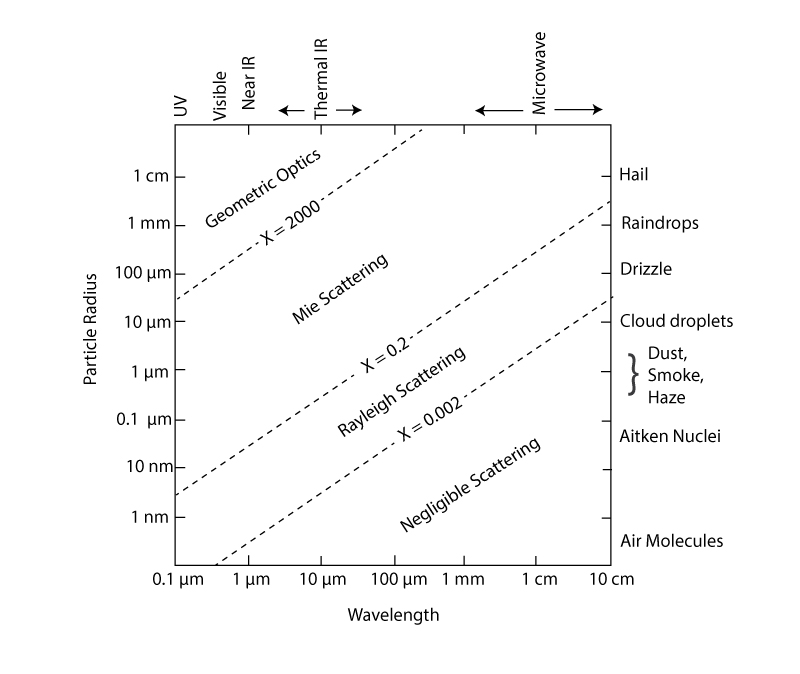Preface: I wrote this before you guys posted your comments, so if it seems like I didn't read the whole thread, that is why.
~~
All very interesting! I'll certainly pay more attention when summer comes around and we get some sun!
When I referred to water vapor I assumed there was an invisible region around the cloud where the dissolved water was at a higher concentration than in the cloud itself.
As to the light doing forward scattering, is that partly diffraction? (i.e. as in a diffraction grating) and partly reflecting at glancing angles off the sides of the droplets? All transmissive modes (i.e. light going into the drops) would basically focus to a point a drop's diameter away and spread at an extremely wide angle.
In general, a cloud scatters kind of in all directions evenly but if it's thin there's definitely a silver lining, so I'm wondering if it's diffraction and external surface reflection. But then again it depends on the situation, I've also seen where there's an even thin cloud and you can clearly see the disc of the sun through it, but there's no visible forward scattering.
I'm definitely going to have to pay more attention. Come to think of it, I've really only noticed forward scattering at cloud edges but not when there's a similarly thin but large even cloud layer.
I've actually seen pine trees on a distant hill lit up in what looks like the forward scattering - the trees were on a hill and the sun was behind the tree and every needle on that tree was brilliantly blazing bright. I figured it might be diffraction around the edges and reflection off the nearly ray-parallel surfaces.
As to solar power, my old boss had (and still has) a grid tie solar system - and he used to show me the power graphs it produced and he'd show me how the power would peak drastically high on partly cloudy days.
But before that, as a youngster, I always noticed that sudden hot surge when I was outside on a sunny day but I never understood it, then when my old boss told me about the cloud edge effect, then I started looking up when I felt the surge of heat and noticed it did correlate with the edge of a cloud.
Here's a couple pictures of tree-glow I took in 2014: (As I recall there were bugs swarming around the trees and that's what the white specs were. But at that time my camera did not take videos, just stills.) (It could also be that the trees were covered in heavy dew but I don't have any way of knowing.) (The two pictures bear the exif date and times of 2014-09-26 12:32:05 and 2014-09-19 17:57:59 - but it's likely my camera clock was off a day or two and some hours since I never set it. But it's safe to assume the photos were taken about 6 hours later in the day for one of them.)



